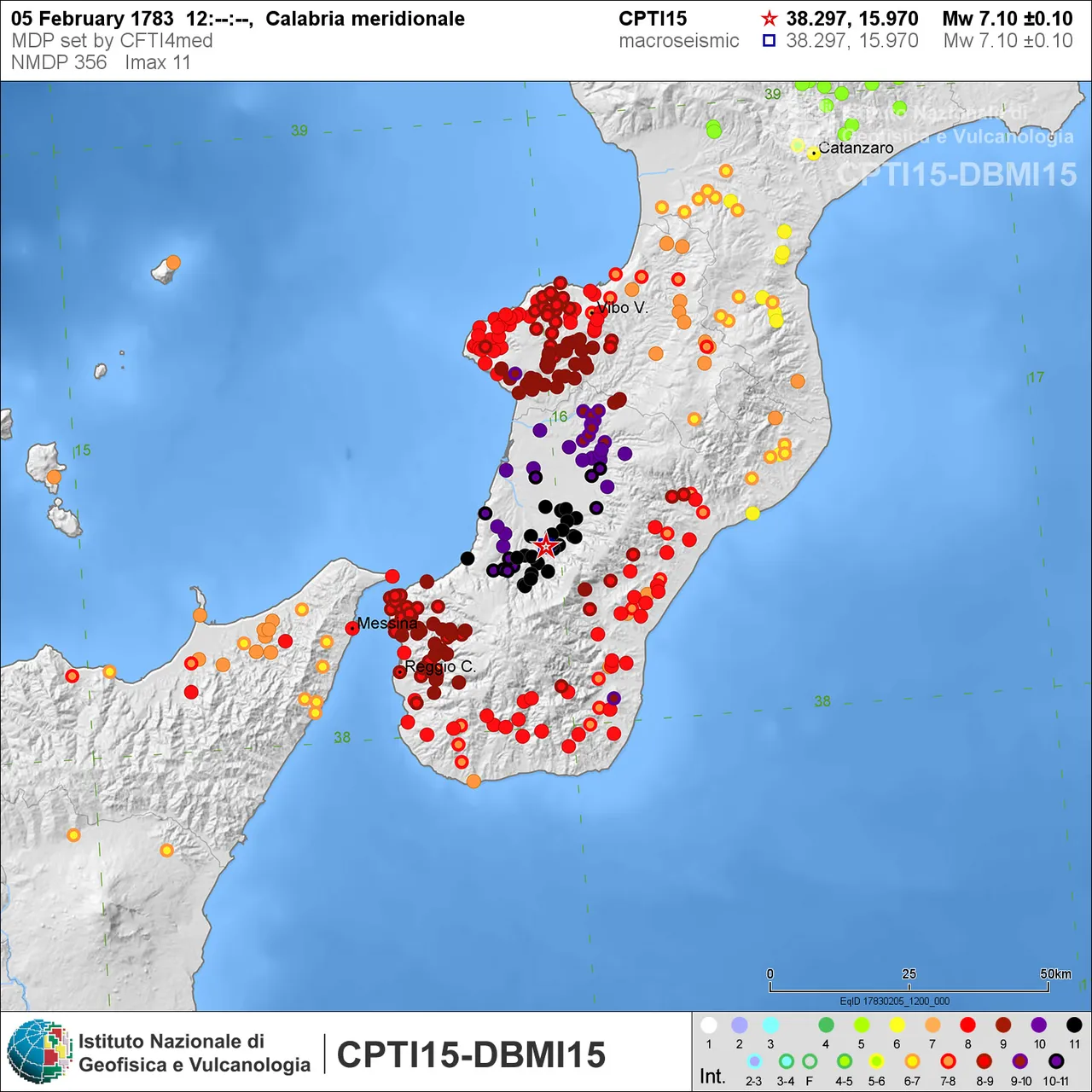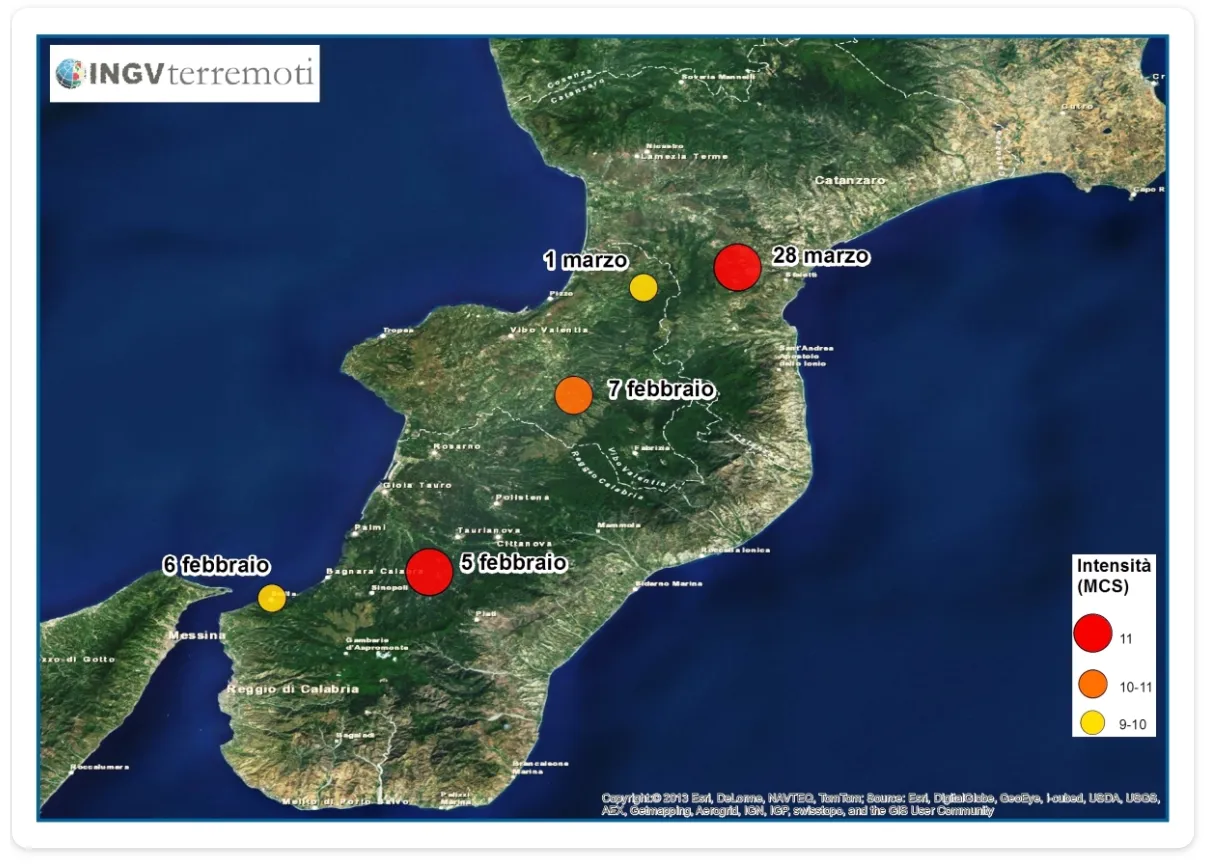"On February 5, 1783, Calabria (Southern Italy) began one of the longest and most disastrous seismic periods that have ever occurred in the earthquake history of Italy. Between 5 February and 28 March there were 5 very strong shocks (5 February, 6 February, 7 February, 1 March and 28 March 1783) and several hundred minor aftershocks, whose overall effects were devastating on most of the Calabrian territory and in north-eastern Sicily. The most violent shocks first struck (February 5 and 6) the southern Calabria, investing the whole area of the Aspromonte and the Strait of Messina, then (February 7, March 1 and 28) the Stretta di Catanzaro, that is the area included between the Gulf of Sant'Eufemia and the Gulf of Squillace."
Source: https://ingvterremoti.wordpress.com/2014/02/19/speciale-i-terremoti-nella-storia-i-borboni-di-napoli-e-il-grande-terremoto-delle-calabrie-del-1783/

Distribution of macroseismic intensity (Int) of Main event: Magnitude 7.1(Mw) e maximum macroseismic intensity Int=11(MCS). The epicenter is given by red star.
https://emidius.mi.ingv.it/CPTI15-DBMI15/query_eq/

The colored circles correspond to the epicentres of the 5 earthquakes stronger than the long seismic sequence of 1783 (5 February, 6 February, 7 February, 1 March and 28 March). The color and the dimensions of the circles indicate the maximum intensity observed Imax (Source: CPTI11). Source: https://ingvterremoti.wordpress.com/2014/02/19/speciale-i-terremoti-nella-storia-i-borboni-di-napoli-e-il-grande-terremoto-delle-calabrie-del-1783/

Source: en.wikipedia.org/wiki/1783_Calabrian_earthquakes
Contemporary print of the 1783 earthquake
